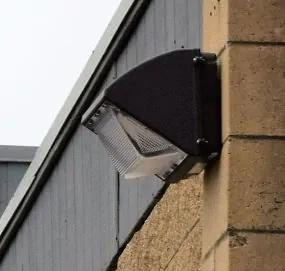Topmost Benefits Of Using Led Lights For Your Surroundings.
In the beginning days, LED bulbs used to be expensive. Nowadays; however, better-developed processes and economies of scale have made lighting affordable. The bulbs are still more expensive than conventional light bulbs, but they are more cost-effective due to their longevity.
Today, as everyone is concerned about the changing environment and worries about pollution and energy conservation, you can feel good about using LED lighting, as it is energy-efficient. When you use a 60-watt incandescent light bulb, for instance, annually, it uses about 525 kilowatt-hours of energy in comparison to a 60-watt LED bulb only uses nearly 65 kilowatt-hours of energy every year.
Generally, an LED bulb is 80 to 90 per cent efficient, defining that 80 per cent of the electrical energy is transformed to light, with only 20 per cent lost as heat. For the traditional bulb, the reverse is true that is 20 per cent of the electrical energy used is converted to light and the remaining 80 per cent is lost to heat.
Given that LED bulbs don’t manufacture as much heat as incandescent bulbs, they burn cooler and are safer to use. Another economically friendly feature of Sensored lights is their composition. They are made of non-toxic materials and are entirely recyclable.
LED lighting is also more cost-effective and suitable than incandescent or fluorescent lighting. LED lights are considered solid-state lights and are more steady light sources than incandescent or fluorescent lights, structuring them much longer-lasting. For example, a typical incandescent bulb has longevity of about 750 hours in comparison to an LED bulb that can last between 50,000 and 100,000 hours. 100,000 hours translates to 11 years of functioning constantly; you can imagine not changing a light bulb for more than a decade.
This longevity makes them ideal for hard to reach areas, such as in an atrium or a room with a cathedral ceiling.
Efficiency
The first and the foremost advantage of using; led light fixtures is that they are packed powerfully with sufficient energy and use up to 90% less electricity than incandescent light bulbs. Since LEDs are substantially cheaper than an incandescent bulb, there is a dramatic decrease in consumption costs, and thus, the money you dish out every month towards your utility bills. Money and energy are saved in maintenance and replacement overheads due to the long LED life expectancy.
Longevity
Generally, LEDs have a lifespan of up to 60,000 hours as contrasting to 1,500 hours typical of incandescent bulbs. An immense LED light can last over 7 years of constant use before requiring a replacement. Typically, outside lighting LED bulbs last ten times as long as small fluorescent bulbs and 134 times longer than typical incandescent bulbs. The long duration of LEDs will radically reduce maintenance costs and lower long-term operating costs in comparison to traditional fluorescent lights.
Sturdiness
LEDs are solid express lighting equipment that utilizes semiconductor material rather than a filament or neon gas. An LED light is a small chip that makes LEDs a lot sturdier than conventional incandescent bulbs.
Safety
Superior safety is considered to be the most significant benefit of LEDs. LED lamps produce almost no warmth therefore they are cool to the touch and can be left on for hours without incident or consequence if touched. LEDs produce 3.4 btu’s/hour compared to 85 for incandescent bulbs. In contrast, incandescent lighting expels 90% of the energy it utilizes via heat, making the bulbs hot to the touch. LEDs reduce the potential for safety dangers like burns and fires.
Environment
LEDs are made of non-toxic materials, unlike neon lighting that uses mercury that may pose a danger to the surroundings. UV light bulbs are ecological and also considered green, or earth-friendly.
Color
LED lighting is available in a variety of base colors, such as red, blue, and amber. Because traditional incandescent bulbs use filters to offer colors, they are awfully bad. LEDs can be mixed to produce great numbers of color options.
LEDs are currently used for a broad variety of different applications, such as in residential lighting, architecture, the military, as well as transmissions, automotive, electronic instrumentation, entertainment and gaming, the military, and the traffic and transportation industry. While LEDs are focused lights, they are great at performing certain lighting tasks, such as desk lamps, security signals, reading lights, night lights, spotlights, accent lamps, and lighting for signs.
LED lights offer directional lighting to aspire the illumination where you want it without the requirement for reflectors and it reduces wasted light. It provides more concentrated light where you need it instead of lighting areas that don’t matter.

Comments
Post a Comment